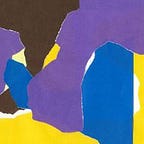1. Three-Layer Cycle Structure
The three-layer circle structure as a division of power is achieved when the arrows representing the direction of the control channels keep one direction for the entire cycle.
As shown in the example of the 3-layer cycle during a natural disaster, if any one of the directions of the arrows changes, a power imbalance will occur, and a one-sided weakness will arise, which will be inappropriate for a structure of power division.
If all the arrows go in opposite directions (the cycle reverses), then the overall structure of the three-layer cycle is maintained. We can assume that the division of power is valid (whether or not it is appropriate for the people to be controlled by the government, etc.).
Since the above explanation is too conceptual to make a clear image, we will show some concrete examples of the forward and reverse directions with figures and bullet points below.
2. Direction of the Cycles: Normal ( Forward Direction )
Statistical Decision making
Elections, Public opinion polls, Pressure from demand and market conditions
Resource Constraints
- (Environment) Climate change, resource depletion, Pollution emissions, Suffering from natural disasters
- (International) The decline in living quality due to changing business conditions, Deteriorating economic conditions
Improving Boundary Conditions
- (International) Diplomacy, Military intervention, Economic sanctions, Colonization
- (Environment) Flood control, Development
We have already discussed a few cases where the cycle is in the forward direction, but let’s look at a different example.
First of all, the influence of the “people” on the “government” is shown through elections and public opinion polls. This channel is called “statistical decision making” in this article.
Second, interventions from the “government” to the “world” are made through diplomacy and military interventions in the case of the international society and through hydraulic engineering and the utilization of natural resources in the case of the environment. The purpose of these actions is to “ improving the boundary conditions (i.e., the assumptions for solving problems).”
Pressures from the “world” on the “people” include living standards decline due to changes in the international community and threats to survival and suffering from climate change caused by the environment. Roughly speaking, it is the “resource constraints” that the world puts on the people.
Credits: Original idea by Asaki NISHIKAWA, Draft written by Toshihiro FURUYA, Drawing by Yoshimi KIKUYA, Simultaneous editing by VECTION
